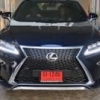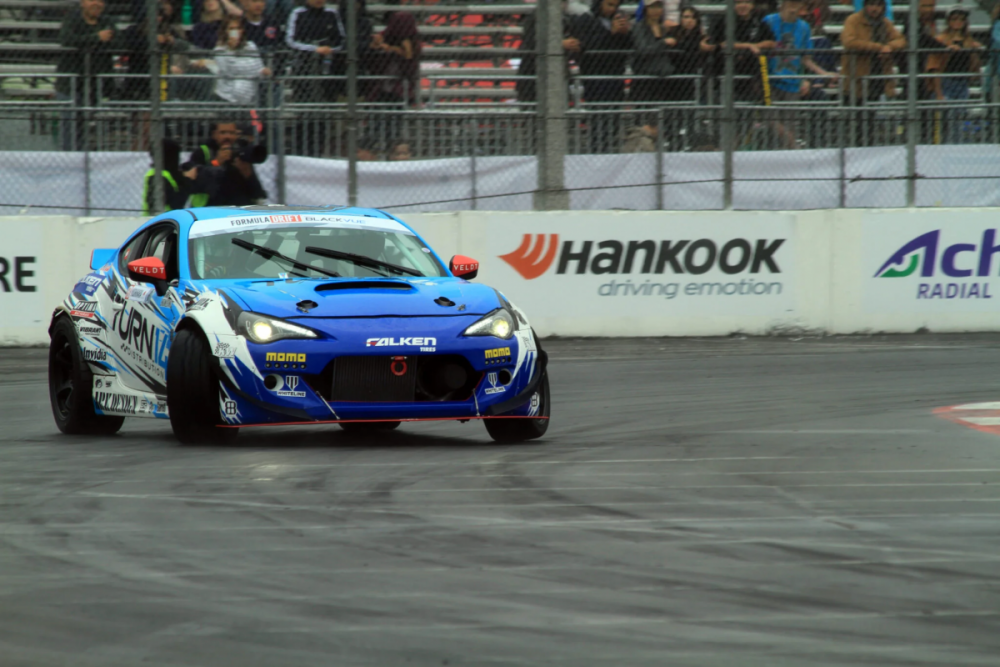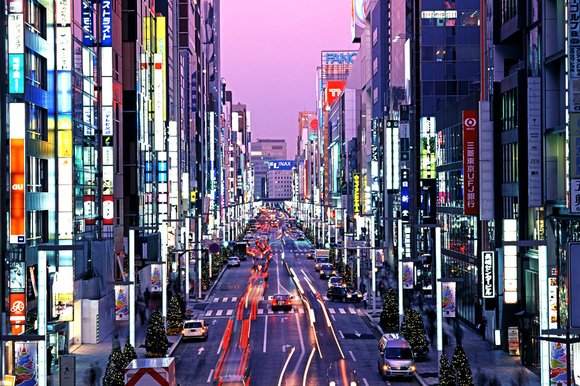Search the Community
Showing results for tags 'Japan'.
-
https://asia.nikkei.com/Life-Arts/Arts/Asia-s-first-female-Lego-master-builds-bridges-to-brick-fans?utm_campaign=GL_asia_daily&utm_medium=email&utm_source=NA_newsletter&utm_content=article_link&del_type=1&pub_date=20211101123000&seq_num=29&si=44594 Asia's first female Lego master builds bridges to brick fans Japan's Kanna Nakayama dreams up models without putting pencil to paper Lego master model builder Kanna Nakayama typically assembles her designs with no need for a physical blueprint. (Photo by Karina Noka) TATSUYA YASUDA, Nikkei staff writerOctober 31, 2021 14:00 JST OSAKA -- Kanna Nakayama's Osaka workshop is a space 5 meters square with the air of a university research lab -- albeit one packed with thousands of kinds of Lego blocks. Bright-eyed children peer in through the window to see the handiwork of Asia's first female Lego master model builder at the Legoland Discovery Center in Osaka. The workshop features a complex array of models dreamed up by Nakayama, from a ukulele to a replica of the Tower of the Sun, an Osaka landmark built for the 1970 World Expo. Most of her complex designs are developed entirely in her head, without blueprints for reference. Nakayama is the park's resident master builder, having earned the title in a 2015 competition. She is one of just a few dozen Lego specialists worldwide with that status, only three of whom are in Japan. Nakayama's love of Legos started young. She began playing with the bricks before she was a year old, and wrote in a kindergarten essay that she wanted to work with Legos when she grew up. Nakayama enrolled in Osaka University's School of Engineering Science after learning that it offered classes on making robots with Legos, and set up a Lego club at her school. Nakayama's workshop features thousands of types of Lego bricks. (Photo by Karina Noka) As a master builder, Nakayama conveys the appeal of Legos to the public through display pieces and partnerships with companies. A meter-long shachihoko -- a fishlike golden statue best known as a symbol of Nagoya Castle -- that she built for a television program took half a year and 15,000 bricks to make. She specifically made it blockier "so you could tell it was made with Legos even on-screen," she said. Nakayama's skills have been honed through years of experience and countless projects. "I've repeated the process of making things and breaking them down too many times to count," she said. "Even now, I almost never draft my designs on paper." With more straightforward projects, Nakayama works out the overall balance, color scheme and even fine details all in her head. She says she still finds it challenging to reproduce such asymmetrical subjects as living things and nature. To replicate the rough-textured legs of a Nagoya Cochin chicken, for example, she intentionally aligned blocks unevenly instead of making the surface smooth. Nakayama shows off a model of a Nagoya Cochin chicken. (Photo by Karina Noka) Nakayama sees bringing fans together as one of her most important roles. She is humble about her own skills -- "I'm not at the top when it comes to building technique," she says -- but is active on social media, where she is seen by many as a walking Lego encyclopedia. When the sports pictograms designed for the Tokyo Olympics drew buzz online, she replicated them in Lego form the next day. While Legos are often dismissed as mere toys, Nakayama pointed to their educational potential. "Even small children can develop their number sense by judging how many blocks they need," she said. Going forward, "I want to use my own expertise, such as programming, to teach classes on how to make more difficult models," like projects that move, she said.
-
https://asia.nikkei.com/Business/Technology/Japan-drone-maker-s-flying-motorcycle-to-hit-the-skies-next-year?utm_campaign=GL_asia_daily&utm_medium=email&utm_source=NA_newsletter&utm_content=article_link&del_type=1&pub_date=20211026190000&seq_num=17&si=44594 Japan drone maker's flying motorcycle to hit the skies next year A.L.I. Technologies starts taking orders for $682,000 Xturismo The Xturismo is the first 'hoverbike' to make its debut in Japan. (Photo by Ken Kobayashi) ERI SUGIURA, Nikkei staff writerOctober 26, 2021 16:16 JST OYAMA, Japan -- On a nearly empty racetrack in the foothills of Mt. Fuji, a Tokyo-based drone startup unveiled its vision for the future of transport: a flying motorcycle able to hit speeds of up to 100kph. In a scene straight out of a sci-fi film, the driver fired up the Xturismo, which rose several meters off the ground and cruised along the track for about a minute and a half. Reporters and guests -- all wearing earplugs against the deafening noise -- looked on. Developed by A.L.I. Technologies, the "hoverbike," as the company describes it, weighs 300 kg and is capable of carrying a single rider. According to the company, it can travel at its top speed for up to 40 minutes. A.L.I., which is backed by Kyocera and Mitsui Sumitomo Insurance Venture Capital, started taking orders for the bike the same day it was unveiled and plans to deliver the limited-edition run of 200 vehicles to customers by the first half of next year. The price is set at 77.7 million yen ($682,000). Powered primarily by an internal combustion engine, Xturismo relies on two main propellers to stay aloft. The bike is equipped with the same altitude control technology A.L.I. uses in its drone products, allowing it to glide smoothly through the air. "We would like to propose a new lifestyle with this floating vehicle," CEO Daisuke Katano said at the unveiling ceremony. In addition to leisure, the bike could also be used to help rescue people from accidents on the water, said a member of Japan's ruling Liberal Democratic Party who attended the ceremony. A.L.I.'s four-year achievement comes as the race to sell flying motorcycles heats up around the world. U.S.-based JetPack Aviation recently said it had succeeded in a flight test of a prototype of the Speeder, reportedly setting itself on course for a launch as early as 2023. Pre-orders start at $380,000. French startup Lazareth is also developing a flying motorcycle. 'We would like to propose a new lifestyle with this floating vehicle,' said Daisuke Katano, A.L.I. Technologies chief executive. (Photo by Ken Kobayashi) Investment has been pouring into flying cars, with Toyota Motor investing 43 billion yen in U.S.-based Jobby Aviation in January 2020. HT Aero, a flying car startup backed by Chinese electric vehicle company Xpeng, said last week it has raised over $500 million in its latest funding round. Honda Motor revealed last month that it has been developing a flying car as a part of its 5 trillion yen research and development over the next six years.
- 40 replies
-
- 5
-

-

-
.png)
-
https://www.carbibles.com/dai-yoshihara-announces-retirement-from-formula-drift/ "The End of an Era: Dai Yoshihara Announces Retirement From Formula Drift One of the longest lasting Formula Drift drivers calls it quits. In 2003 a young Japanese driver named Daijiro Yoshihara came to the United States to compete in the inaugural (and short-lived) D1 Grand Prix USA series (D1GP). At the very start of American drift culture, Yoshihara was there and doing extremely well, including a 2nd-place overall finish in 2004 Formula Drift (FD). Eighteen years of drifting later with one Formula Drift title to his name, he is calling it quits on professional drifting. For now. Yoshihara has always been one of my favorite drivers. When I was 18 years old, I shot a few rounds of Formula Drift for zero money and considerable effort. The first round I shot was 2016 Long Beach. I rented some lenses and got to the track early to explore. After I wandered the parking garage for vantage points, tech inspection began downstairs and I meandered over to the blue and white Subaru BRZ to find Dai standing just beside it. He was the first person I talked to at an FD event and he was a nice dude with good vibes. His driving style and career were the stuff of legend to me, and there I was having a nice chat. It was surreal and one of the many reasons the early years of FD are my favorite. Dai is one of those drivers who persevered through them all. My favorite time is easily 2004 to 2007, when D1GP hosted regular events stateside with some of the Japanese drivers shipping over to compete against the best of the United States. Icons like Ken Nomura, known as Nomuken, Nobushige Kumakubo of Team Orange, Max Orido with his Supra, Youichi Imamura in the APEX’i FD3S, Masato Kawabata in his S15 before the famous 2009 reverse entry, as well as Naoto and Masao Suenaga, and Michihiro Takatori who would later compete in the Super Autobacs R34, all came ashore to drift at American drift courses like Irwindale and Englishtown. That peak era of drifting is when style was still king, when cars were more original in style and in parts content, and before the insane angle-kitted, semi-tube frame, 1,200-horsepower sideways drag racers of today. Back then, a lowly AE86 Corolla with a hopped-up 4A-GE could conceivably compete against a mild SR20 S-chassis Nissan. Best of all, most of the cars still looked like cars, not like a plastic shell over a roll cage. This is even well before the idea of over fenders was even considered, with the best Japanese aero companies like BN Sports and Veilside making full kits for maximum flair, and much before the LS swap craze of the 2010s. Yoshihara competed against these folks as a part of a de facto Team America and was part of Team America for the 2005 D1 U.S.A. vs. Japan exhibition round. Though he grew up street drifting in the mountains of Japan, he found his way as a driver here in the earliest days of drifting. After years of running an S13 chassis, he started finding success after befriending former TRD engineer Mike Kojima and a brief, ill-fated stint in the Discount Tire Lexus IS 350. With a Falken Tire sponsorship and Discount Tire title sponsorship, Yoshihara got some momentum with an S13 originally destined to be a street car in 2009. With the expert suspension tuning of Kojima, they began a new era of drifting that carried through to the arrival of Daigo Saito in 2012. Suspension tuning and setup became a real thing for professional drifting, as well as the V8 LS swap. The 2010 Discount Tire S13 was one of the first cars powered by a mild LS2 and evolved into the championship-winning 2011 car. Yoshihara also became the unbelievably smooth and precise driver he is today. His 2011 season was documented by the Behind The Smoke series by GTChannel, seen above. The trends that Yoshihara set with his career are some of the longest-lasting ones in car culture. It’s impossible to go to any drift event without seeing at least 10 LS-swapped S-chassis Nissans. Ultimately, this would be the only championship Yoshihara would ever get. The next year, Daigo Saito came in with aggressive tandem driving and an 800-1,200-horsepower Lexus SC 430 to counter Yoshihara’s smooth style and 600 horsepower. Not to mention, off-the-shelf drift steering angle kits were starting to get popular, and by 2014, professional drifting became a different sport altogether. Yoshihara might be one of the best drivers in Formula Drift and one of the greats of our time. Formula Drift struggles with keeping drivers interested for the long haul, with many judging, sponsorship, and cost issues that make the series a difficult one to compete in. More often than not, it’s lighting money on fire. Though Yoshihara is leaving that sport, he is continuing on an exciting path that includes plenty of time-attack grip driving, exhibition drifting, and continuing to make attempts at a Pike’s Peak record. I’ll be honest, I don’t enjoy what pro drifting has become, but I’ll always enjoy watching Yoshihara drive cars extremely quickly. He is the ultimate example of a grassroots hero becoming a respected and well-known driver the world over. It’s amazing what some kids in a glorified parking lot with some shitcan old Japanese cars can do with their lives. Best of luck to Dai with all of his future efforts. Au revoir drifting."
-
https://asia.nikkei.com/Business/Food-Beverage/Japan-s-Skylark-rolls-out-robo-waiters-for-contactless-dining?utm_campaign=GL_JP_update&utm_medium=email&utm_source=NA_newsletter&utm_content=article_link&del_type=4&pub_date=20211019090000&seq_num=20&si=44594 Japan's Skylark rolls out robo-waiters for contactless dining Restaurants seek solutions to labor shortages as restrictions are lifted Skylark has been testing the robot waiters at family restaurants in Tokyo. (Photo courtesy of Skylark) RISA KAWABA, Nikkei staff writerOctober 18, 2021 03:36 JST TOKYO -- Dinner will be served robot-style at 2,000 eateries run by Skylark Holdings, Japan's largest operator of family restaurants, by the end of next year. The robot waiters can ferry food for up to four people to a designated table, then bring dishes back once customers are done eating. In a trial that started in August in Tokyo, the robots cut the number of steps staff members took by half during busy periods. With authorities easing restrictions on dining out and other activities that had been curtailed over pandemic concerns, Skylark aims to compensate for the restaurant industry's chronic worker shortage without sacrificing service quality. Robot servers also reduce contact between customers and human staff, lowering the risk of virus transmission. The robots will be introduced by the end of April 2022 at 1,000 or so locations, including certain Gusto restaurants and all of the Syabuyo shabu-shabu Japanese-style hot-pot chain. By the end of that year, they will be at more than 60% of Skylark's roughly 3,000 restaurants across Japan. Funding for the robot servers will come from the 43 billion yen ($380 million) or so raised by Skylark in June, 6 billion yen of which has been earmarked for technology investment. Other recent tech moves by Skylark include the adoption of cashless payments in May 2019 and touch-screen menus in February 2020. The pandemic has spurred other Japanese restaurant companies to give robot workers a try. Saizeriya, an operator of Italian eateries, has been trying out robot servers since the spring of 2020, with tests of its third model starting this September. It plans to introduce them at busy locations once the results are in. Pub operator Watami now has robots serving dishes at 16 of its 26 Yakiniku no Watami barbecue restaurants in Japan.
-
2022 Mazda CX-5 Revealed With Updated Design, Standard All-Wheel Drive There are more changes than meets the eye as the 2022 CX-5 benefits from a more responsive six-speed automatic transmission delivering smoother acceleration. Not only that, but the compact SUV now features a different suspension to better iron out vibrations and diminish road noise courtesy of a new dampening control structure and higher frame rigidity. Another important update is all-wheel drive being made standard across the range. As a matter of fact, Mazda is offering AWD as standard equipment on all CX models going forward. From the subcompact CX-30 to the midsize CX-9, every single SUV sold by the company will have an all-paw system even in the entry-level trim.
-
https://asia.nikkei.com/Business/Health-Care/Brain-stimulating-glasses-to-fight-dementia-Japanese-companies-say?utm_campaign=GL_JP_update&utm_medium=email&utm_source=NA_newsletter&utm_content=article_link&del_type=4&pub_date=20210908085958&seq_num=5&si=44594 Brain-stimulating glasses to fight dementia, Japanese companies say Drugmaker Sumitomo Dainippon Pharma aims to start clinical trials in two years A number of drugs have been developed to treat dementia, but devices are rare. (Photo by Akira Kodaka) SOSUKE KARINO, Nikkei staff writerSeptember 8, 2021 03:01 JST OSAKA -- A Japanese drugmaker has teamed with a startup to develop a wearable device like eyeglasses that the companies hope to use to treat dementia symptoms. Light-emitting diodes in the frame will shine violet light -- which lies at the high end of the visible spectrum -- into the wearer's eyes for several hours a day, stimulating parts of the brain including the frontal lobe and hippocampus. The light will be nearly invisible to the wearer, letting them go on with their everyday activities, according to developers Sumitomo Dainippon Pharma and Tsubota Laboratory, founded at Keio University. While a number of drugs have been developed to fight dementia -- including Aduhelm, an Alzheimer's treatment from Eisai and Biogen recently approved by the U.S. Food and Drug Administration -- devices are rare in this field of medicine. Clinical trials are expected to begin as early as the fiscal year ending March 2024 with the goal of bringing the product on the market two years after that, the companies said. Violet light makes up part of sunlight. With a wavelength of around 360 nanometers to 400 nanometers, it lies just before ultraviolet light in the spectrum.
-
https://asia.nikkei.com/Spotlight/Coronavirus/Japan-nears-homegrown-vaccine-with-Daiichi-Sankyo-Phase-3-trials?utm_campaign=GL_JP_update&utm_medium=email&utm_source=NA_newsletter&utm_content=article_link&del_type=4&pub_date=20210713090000&seq_num=2&si=44594 Japan nears homegrown vaccine with Daiichi Sankyo Phase 3 trials Shionogi eyes enough COVID shots for 60m people a year KENYA AKAMA, Nikkei staff writerJuly 13, 2021 04:44 JST TOKYO -- Daiichi Sankyo plans to begin Phase 3 clinical trials for its coronavirus vaccine this autumn with the aim of bringing it to the public in 2022, finally pushing forward Japan's effort to locally develop COVID-19 shots. A few other Japanese drugmakers are also making progress in vaccine development, including Shionogi, which says it would be able to supply enough doses for 60 million people a year if a reduced dose proves to be as effective as the previously proposed amount. Since March, Daiichi Sankyo has been conducting a combined Phase 1 and 2 trial of its vaccine based on the same type of messenger RNA technology with a group of about 150 adults. A Phase 3 clinical trial will involve thousands of volunteers. Typically in a Phase 3 study, half of participants receive the actual treatment and the rest get a placebo. But with the Pfizer and Moderna vaccines already available in Japan, a trial administering fake shots would raise ethical issues and turn volunteers away. So Daiichi Sankyo's next trial is expected to test non-inferiority, meaning that the goal is to show the company's new treatment matches or outperforms those made by Pfizer and Moderna -- also mRNA shots -- in terms of efficacy. Details of the study are being ironed out with the health ministry. Domestic subsidiary Daiichi Sankyo Biotech plans to establish a structure for producing the vaccine by March 2022. Capacity will be determined based partly on the results of the trials. Shionogi has been carrying out its trial since December. If its vaccine receives special conditional approval, the treatment may be rolled out before year-end, the company reckons. A factory in Gifu Prefecture is being updated to accommodate anticipated production. At the next stage of studies, Shionogi will test whether a smaller-than-planned dose of its vaccine has the same efficacy. If such dose stretching is proved effective, the vaccine's capacity will jump to as many as 60 million people a year, or twice the number anticipated initially. Shionogi is also readying large-scale Phase 3 trials in other markets such as Southeast Asia. Japan has no homegrown COVID-19 vaccine approved, and the country depends on overseas versions. Besides Daiichi Sankyo and Shionogi, two more domestic companies are conducting trials: KM Biologics, a group company of food giant Meiji Holdings; and biotech venture AnGes. KM Biologics intends to file for approval around summer 2022, with plans for a structure by that spring to churn out 35 million doses in six months.
-
I am so tempted to put Hyundai Velar as the header... But seriously, it look much more elegant and luxurious than it predecessor, and I believe it can put up a good fight against Lexus and Volvo. Dressed in a reflective platinum hue, the Infiniti QX60 Monograph previews a more upscale and commanding design for the brand's popular family-focused SUV. "We commenced the design of the Monograph knowing this was an opportune time to start a discussion about where we are planning to take the QX60 in the future and more broadly, where we are heading as a brand with our design language'" said Alfonso Albaisa, senior vice president, Global Design, Nissan Motor Co. Ltd. More than a design study or concept, a "Monograph" provides a tangible insight into how Infiniti plans to transform a future model. The QX60 Monograph previews some of the proportions and design elements that will adorn the brand's future three-row SUV. Reimagining the future QX60 SUV Focused solely on the exterior, Infiniti designers imagined the QX60 Monograph as a sophisticated yet functional solution for a busy, modern family. The proportions include a wide stance, sleek greenhouse, horizontal shoulder line and muscular wheel arches. The combination of which creates a commanding posture and defined SUV persona. "In crafting this Monograph, we wanted to change the tonality of the QX60 and transform the nameplate from a sculptural and architectural point of view. We raised the visual center of gravity, giving it a strong, straight shoulder line that carries through to the hood, with a higher, more prominent grille, and longer-looking cabin to deliver a sense of muscularity and a commanding presence" Albaisa said. The current QX60 is popular with families and is known for offering spacious packaging and comfortable, dedicated three-row seating. The proportions of the QX60 Monograph illustrate Infiniti's intention to maintain these strengths while transforming the model with a more aerodynamic, muscular silhouette. Viewed from the side, the Monograph shows off its powerful horizontal hood, muscular fenders and long wheelbase. Paired with the gentle rake of the A-pillar and tapered, teardrop-like glasshouse, the result is a long sweeping, sophisticated profile. Embossed with the Infiniti name, QX60 Monograph features large alloy wheels that fill the pronounced fenders and reinforce the performance-inspired aesthetic. At the rear, the wide body and track, paired with horizontal window line give QX60 Monograph a sense of poise and stability. The high shoulder line raises its visual center of gravity. The roof flows into a subtly integrated rear roof spoiler - also in gloss black - to further enhance the car's aerodynamic appearance. Each of these measures create QX60 Monograph's strong, stable stance. Reflecting Movement "The platinum paint on the QX60 Monograph projects a sense of warmth. The highly reflective nature mimics the qualities of liquid metal, allowing the surface of the body to capture the shadows and lights of the environment in which it is displayed creating a sense of dynamism" said Taisuke Nakamura, senior design director, Infiniti Global Design, Nissan Motor Co. Ltd. The black roof creates a strong contrast to the rich body color for a dramatic visual statement. The pillars, roof, front, side and rear glass all seamlessly connect - giving a panoramic feel to the cabin and promoting a sense of openness. Slim-line roof rails provide a practical counterpoint to the QX60 Monograph's sleek, sporty proportions. Japanese Inspirations "The QX60 Monograph embodies the Japanese concept of `Ma,' a sense of minimalism where designers seek harmony, adding just the right amount of elements with very specific meaning to create something special. This is evident on the body, where at a glance it is simple, but when you get closer, you see that there are elements that are playing against each other in a sense of harmony." Albaisa explains. The intricate folds of traditional Japanese origami were the inspiration for the inner mesh of the signature `Double Arch' Infiniti grille. The result is a two-dimensional surface that projects a sense of three-dimensional depth. The same mesh pattern is echoed in the side air intakes in the lower corners of the bumper. The wide track and the sharp lines in the bodywork combine to deliver a sense of stability and a sophisticated visual statement. A large panoramic roof features a "kimono fold" pattern. This geometric feature, a series of intricate perpendicular lines, draws inspiration from the folds of a silk kimono and the structures of Japan's modern architecture. Lighting the path forward Intricate "Digital Piano Key" lighting at the front and rear projects a futuristic appearance and showcases Infiniti's desire to blend human artistry with the latest technology. The inner structure of the headlamp features a shape and pattern of lines inspired by an electrical heatsink device. Bright white at the front, and ultra-red at the back, the QX60 Monograph's lamps are accompanied by the glowing "infinite road" brand emblem. Combined, the opening light sequence begins at the logo and fans out to the headlamps in a dynamic welcome for drivers. The rear lamps are tinted and, when extinguished, appear to wrap around the back of the vehicle and into the rear flanks in one continuous shape. Illuminated, the piano key lighting shines through to form a beautiful, futuristic light signature. As a complete package, Infiniti QX60 Monograph reveals a transformation in the direction that Infiniti's designers are adopting for the next-generation QX60. The production version of the next generation QX60 is expected in 2021.
- 11 replies
-
- 12
-

-
https://asia.nikkei.com/Life-Arts/Life/As-Japan-s-empty-homes-multiply-its-laws-are-slowly-catching-up?utm_campaign=GL_JP_update&utm_medium=email&utm_source=NA_newsletter&utm_content=article_link&del_type=4&pub_date=20210612090000&seq_num=14&si=44594 As Japan's empty homes multiply, its laws are slowly catching up Unclaimed land could swell to the size of Hokkaido by 2040 if left unchecked An abandoned home with an ocean view, Kushimoto, Wakayama Prefecture. In Kushimoto, more than one out of four houses are vacant. (Photo by Thomas Shomaker) THOMAS SHOMAKER, Contributing writerJune 11, 2021 08:08 JST TANABE, JAPAN -- Outside of densely populated cities characterized by skyscrapers and tiny apartments lies another Japan. In much of this world, akiya, abandoned homes, and akibiru, abandoned buildings, form the backdrop to everyday life -- not a picture one immediately associates with the hustle and bustle of the world's third largest economy. But if current trends continue, more than 30% of Japan's housing stock -- 22 million units -- will be derelict by 2038, Nomura Research Institute predicts. In other words, Japan has a very large problem with unclaimed land -- one that could potentially reach the size of Hokkaido, the country's second-largest island, by 2040, according to another study, published in 2017. The most obvious reason for this situation is Japan's unfolding demographic crisis which has seen its population fall by roughly 200,000 people a year since its peak of 128.5 million in 2009. But a range of other factors -- many of which have legal and cultural underpinnings -- have exacerbated the problem. For the first four decades following World War II, Japan seemed destined for another fate. Buoyed by a surging economy, property was considered a sound investment, boosted by incentives such as tax relief for parcels of land with residences on them. Then came the collapse of Japan's bubble economy -- and with it property values -- in the early 1990s. As Japan entered a long period of economic stagnation, the precipitous decline in birthrates that began in the 1970s started to noticeably change Japanese society, especially outside the major cities. By 2010, as the total population actually began to fall, Japan's voluntary property registration system had become a problem. When property values were rising, heirs had an incentive to register land and dwellings left to them. But in a falling market, the expense and time needed to transfer the title of an inherited property simply became too much hassle for many. Top: A long abandoned home taken over by the forest. Hongu, Wakayama Prefecture. Bottom: The interior of an abandoned home, Hikigawa, Shirahama Wakayama Prefecture. (Photos by Thomas Shomaker) Complicating matters, the devastating March 11, 2011 earthquake and tsunami led to an exodus to higher ground, which in turn further emptied out coastal towns and cities up and down the country. While Japan's demographics and sensibilities have been steadily changing, the law is just now starting to catch up. This April, Japan's Real Estate Registration Law was revised to make inheritance registration mandatory, a potential sea change -- if enforced -- expected to take effect within three years. One person who has greatly raised awareness about Japan's outdated property laws is Shoko Yoshihara, a research fellow at the Tokyo Foundation for Policy Research and the author of the 2017 book "Land Issues in the Era of Depopulation." "Japan's Real Property Registration Law was modeled after France," Yoshihara said in an email, further explaining that the basic intent is to protect ownership from illegitimate third-party claims. But while France has stringent inheritance procedures, "in Japan there has been no strict system to foster inheritance registration which led to the current problem of land registrations remaining in the name of the deceased for a long period of time," Yoshihara said. Japan's lax property laws have created more problems than just empty houses. Until recently, local municipalities that wanted to tear down an unregistered building, either because it had become a hazard or for a public works project, were not able to take action until all living heirs had been contacted. Depending on how long the property had been left empty, living heirs could mean grandchildren or great grandchildren, who could be living elsewhere in the country or even abroad. Lacking the resources to go on expensive wild goose chases, most municipalities ended up leaving the abandoned properties to the elements, often tying up redevelopment projects for years. By 2017, the problem had reached epic proportions, with a private study led by former Iwate Governor and Internal Affairs and Communications Minister Hiroya Masuda estimating that Japan's unclaimed land, including residential, farmland and commercial, had grown to 4.1 million hectares, an area larger than the island of Kyushu, the third-largest island of Japan's five main islands. This was the same study that predicted the Hokkaido scenario by 2040. A cascade of legislative changes over the last decade, including a 2014 law that gave local governments badly needed power to act unilaterally, as well as laws passed this April making property registration mandatory, should gradually start making an impact. A system to manage land of unknown ownership was also recently established. Calling the reforms significant, Yoshihara said the national government still had to work quickly "to make people aware of the new systems." This in itself is not easy, given that many of Japan's smaller, rural governments have themselves disappeared over the last 20 years, with villages merging with nearby larger towns as their populations contract. Take the former town of Hikigawa, in Wakayama Prefecture south of Osaka, where half of the village is abandoned, and the remaining population elderly. Ensuring that the residents of areas like Hikigawa -- and their heirs -- are aware of mandatory inheritance registration will be challenging, to say the least. Manabu Shimoda, a professional photographer and a resident of Wakayama Prefecture's second-largest city, Tanabe -- abandoned buildings make up around 20.3% of the housing stock in Wakayama Prefecture, the second-highest in Japan -- recently worked part-time taking pictures of vacant properties that can be posted online to attract buyers. Top: An empty building, or akibiru, in Tanabe, Wakayama Prefecture. Bottom: A long-abandoned stroller next to a vacated home, Hikigawa, Shirahama, Wakayama Prefecture. (Photos by Thomas Shomaker) "There are people who are attracted to old, wooden Japanese houses called machiya," said Shimoda. "The price is often cheaper than the surrounding market." But common issues such as termites or rotten foundations can obliterate potential savings. "In particular, roof repairs are expensive," Shimoda said. Like many towns with contracting populations, Tanabe is trying to lure new residents, especially with the surge in the number of people working from home, due to the pandemic, and a growing nostalgia for small-town life. Still, there is a long way to go. "My personal impression is that the vacant house rate is higher in the central city area, where more homes are emptying due to tsunami concerns," said Shimoda. Another quirk of the Japanese housing market is that the growing number of vacant homes has not corresponded with a slowdown in housing starts, especially as many younger couples are looking to move to higher ground. The conversation about akiya in Japan usually touches on the issues of property values, regulation and how Japan is dealing with an accelerating demographic change. But there is also an element of sadness that is often unspoken. "Every house has a history and a story and each one is very interesting," said Shimoda, who knows of one such home in Tanabe that still bears World War II shrapnel wounds in a beam in the living room. "The debris wasn't removed during renovation and is still preserved as a memory of the war." As small cities compete for newcomers, Tanabe has a fighting chance. It is only 30 minutes away from Nanki-Shirahama Airport and large enough to provide most of the amenities that urban dwellers are accustomed to. But for every success, there will be a town or village that fades into memory. "The current problem of vacant houses and land is a structural problem that has spread between a declining population and the existing system," said Tokyo Foundation for Policy Research fellow Yoshihara. "There is no panacea. I believe it is important to accumulate short-term measures and medium-term institutional reforms one by one."
-
Pictures from my trip to Hokkaido 2013. Ann was just 5 years old. The peak of her cuteness 🙂 Alex has no pictures in 2020... when he is 6 and cute. Hopefully I can go somewhere this year... http://www.keehian.com/hokkaido/
-
Recommendations, suggestions, from accommodation to attractions to food, travel tips etc... The list goes on! I've filled up some information which I've picked up here and there. 1. Where to stay Shibuya / Shinjuku (Recommendations for affordable + clean hotels? I am also considering Airbnb again after my last two satisfied experience from my GC trip) 2. Places of interest / attractions Mount Fuji, Tokyo Tower, Sensōji Shrine (浅草寺), Tokyo Disneyland/DisneySea, Ikebukuro, Meiji-Jingu Shrine, Cherry Blossom Festivals (Ueno Onshi Park, Asukayama Park, the Meguro River, Chidorigafuchi, Sumida River bank) 3. Shopping Centers / Night markets Shibuya 109 & Shibuya Crossing 4. Transportation 5. Cafe / Restaurants Cat Café Nekorobi 6. MUST BUY souvenirs / local food Tokyo banana, amulets 7. Travel tips Thank you in advance.
- 164 replies
-
Japan Could Ban Sales Of New Gasoline, Diesel Cars In Mid-2030s: Report source: https://www.motor1.com/news/458668/japan-gasoline-diesel-cars-ban/ The country's industry ministry is expected to formalize the deadline soon. The mechanism to curb the effects of climate change is not showing signs of a halt. And of course, the automotive industry, which admittedly contributes to the current mess, is finding ways to reverse the adversities, mostly by switching to selling electric and hybrid vehicles – or at least they won't have a choice. Japan is the latest country to announce a deadline to ban the selling of new gasoline- and diesel-powered cars. This is according to NHK, the country's public broadcaster, and relayed in a report by Reuters. According to the report, Japan is eyeing the mid-2030s for the deadline and is expecting automakers to comply by not selling new fossil fuel-powered vehicles by the said period. It's important to note that Prime Minister Yoshihide Suga has pledged in October that Japan will have zero emissions by 2050 on a net basis. With this, the Land of the Rising Sun is joining the other countries that have set a deadline. Britain, Norway, and Germany have announced so recently, as well as some parts of the United States and Canada. Automakers have already responded to this cause a long time ago, that's why there are more hybrid and electric vehicles now more than ever. These companies know that this is the future, and switching over to electrified vehicles will make them future-proof, as they say. Japan's new deadline, however, will put pressure on its homegrown automakers like Toyota, Honda, Nissan, and Mitsubishi to hasten the R&D timeline for electrification. We've seen new Japanese models, such as the Nissan Ariya EV crossover, this year, so expect more in the near future. NHK reports that Japan's industry ministry is expected to give a formal target for the sales ban by the end of this year.
-
Here's Why Mazda is About to be the Best Car Company
-
@Watwheels and @Sturtles favorite Rock Star has a new Buddy! (pun intended) Wanna to guess which model it is based on? At the front, the Mitsuoka Buddy reminds of the 1980s Chevrolet Tahoe thanks to the big chrome grille and split squared headlights. Seen from the side, the front end is also more upright than on the SUV it is based on. Mitsuoka rips off the original SUV's front end and replaces it with a chrome egg-crate-style grille with a pair of stacked headlights on each side. For a modern touch, there are skinny LED running lights in the central crosspiece. The company also adds a shiny chrome bumper, a hood with sharper creases, and boxier fenders, which makes the area ahead of the windshield vaguely resemble the classic Chevys. The Buddy also receives a modified rear end with styling that more generally evokes the styling of '80s Chevy SUVs without directly taking from them like at the front. There are now vertical taillights and sharper creases for the rear hatch with a two-tone finish for the area in the middle versus the rest of the body color. For a matching touch, there is a chrome bumper like the one for the nose. We don’t get to see the interior yet, but we should expect Mitsuoka to leave its imprint on the cabin as well. For now, the company has announced the color palette, which consists of 11 monotone body colors and six two-tone liveries.
- 55 replies
-
- 15
-

-
.png)
-
Just sharing some Winter adventures. To be updated as I go along Part 1: https://garage36.wordpress.com/2020/03/03/japan-2020-winter-adventures/ Part 2: https://garage36.wordpress.com/2020/03/05/japan-2020-niseko-dreaming/
- 35 replies
-
- 16
-

-
Yoshihide Suga wins key party vote, will likely replace Abe as Japan's prime minister source: https://www.usatoday.com/story/news/world/2020/09/14/japan-prime-minister-yoshihide-suga-wins-party-vote-replace-abe/5790114002/ TOKYO – Yoshihide Suga was elected as the new head of Japan’s ruling party on Monday, virtually guaranteeing him parliamentary election as the country’s next prime minister. Suga received 377 votes in the ruling Liberal Democratic Party election to pick a successor to Prime Minister Shinzo Abe, who announced last month that he would resign due to health problems. The other two contenders received a combined 157 votes –former Foreign minister Fumio Kishida got 89 and former Defense Minister Shigeru Ishiba had 68. The expected victory in the party vote by Suga, currently the chief Cabinet secretary of Abe’s government, all but guarantees his election in a parliamentary vote Wednesday because of the majority held by the Liberal Democrats’ ruling coalition. Suga gained the support of party heavyweights and their wing members early in the campaign on expectations that he would continue Abe’s policies. That his victory appeared to be a done deal has raised criticism from inside and outside the party that the process is undemocratic and murky. The closed-door politics also apparently led lawmakers to support Suga in hopes of getting favorable party and Cabinet posts in the new administration. Suga has said his top priorities are fighting the coronavirus and turning around an economy battered by the pandemic. He repeatedly has noted achievements under the Abe-led government when asked about various policies. Despite his low-key image as Abe’s right-hand man, Suga is actually known for his iron-fist approach to getting jobs done as a policy coordinator and influencing bureaucrats by using the centralized power of the prime minister’s office. Suga says that he is a reformist and that he has worked to achieve policies by breaking territorial barriers of bureaucracy. He has credited himself for those efforts in achieving a booming foreign tourism industry in Japan, lowering cellphone bills and bolstering agricultural exports. Compared to his political skills at home, Suga has hardly traveled overseas, and his diplomatic skills are unknown, though he is largely expected to pursue Abe’s priorities. In addition to the coronavirus and the economic fallout, Suga stands to inherit several other challenges, including China, which continues its assertive actions in the East China Sea. He also will have to decide what to do with the Tokyo Olympics, which were pushed back to next summer due to the coronavirus. And he will have to establish a good relationship with whoever wins the U.S. presidential race.
-
DON DON DONKI OPENS IN SINGAPORE! This Japanese Megastore by Don Quijote Japan has finally opened at Orchard Central! http://tidbitsmag.com/don-don-donki/ Those who have been to the store at Japan and then to the one at OC, how's the comparison like?
- 288 replies
-
- 8
-

-
- don don donki
- japan
-
(and 3 more)
Tagged with:
-
Mysterious back and front view Small built Very nimble Have fashion sense Strong sense of safety Enjoy sun and water Love camping and music Willing to do housework (but afraid of robot) And appreciate worklife balance This ebiflife cute or not? I personally think she is. 😄
- 13 replies
-
- 8
-

-
.png)
-
- influencer
- internet
-
(and 3 more)
Tagged with:
-
Move aside Alphard and Vellfire, this is the new King in large size MPV segment. But honestly, it look more like a Hiace passenger van to me, than a luxurious full size MPV. A full-size wagon, the new Granace commands outstanding presence, making full use of the broad 5.3 meters in length and 1.97 meters in width as a high-quality and comfortable interior space. Adopting a semi-bonnet package, two types of seating arrangements are available: the six-seater with seats in three rows of two, and the eight-seater with seats in four rows of two. The Granace features high-quality performance, delivering sophisticated riding comfort, superior control stability, and a spacious interior. Main features Exterior style that realizes "overwhelming presence and luxury" The large radiator grille embellished with metallic accents flows seamlessly into the headlamps, which project in vertical and horizontal directions, realizing a gorgeous and bold face. The distinctive LED daytime running lamps*6 pierce the headlamps, and together with the projective twin-lens LED headlamps that flow into the decorative chrome frame, express sophistication suitable for luxury cars. "High quality" and "gorgeous" cockpit space The black-infused instrument panel creates a luxurious atmosphere, featuring metallic accents on the air-conditioner outlets and wood-grain embellishment in front of the front passenger seat. The meter hood is wrapped in leather and genuine stitching further lends an air of quality. High-quality space with hospitality in mind leverages spaciousness - In addition to the three-row six-seater, a four-row eight-seater is also available to meet the wide ranging needs of users. - The four seats comprising the second and third rows feature leather captain seats designed for complete relaxation provide a high-quality interior space. In addition to comfortable seating, the new model is equipped with a long slide mechanism and an ottoman mechanism in and other amenities that enhance convenience and comfort. - Wood grain decorations flow from the back of the front seats toward the side trim as if to wrap rear seat passengers in comfort. The LED side color illumination is gently lit, further expressing an elegant and calm quality. Sophisticated high-quality performance - Adopted front-wheel drive layout. Equipped with a 1GD 2.8-liter clean diesel engine and a six-speed automatic transmission, achieving smooth and torque-strong driving from low speeds. - The newly developed trailing-link rigid-axle suspension is used for the rear suspension. The high rigidity body, including the adoption of a ring-shaped frame, achieves a luxurious, comfortable ride with stable handling. - Thorough vibration and sound insulation measures provide a serene quietness suitable for luxury wagons in various road environments. Enhanced advanced equipment - Comes standard with the latest version of Toyota Safety Sense, featuring improved sensing functions that make use of the pre-collision safety system that detects pedestrians during the day and at night, as well as cyclists during the day. - Fully equipped with safety equipment for safety and peace of mind such as Intelligent Clearance Sonar with Parking Support Brakes (Stationary Objects) that helps reduce and/or mitigate damage from collisions during low-speed driving in parking lots, etc. - Equipped with advanced Display Audio (DA). The smartphone linkage function including SDL allows customers to connect with smartphones and operate map applications and music via touch screen display. Specifications Ext. Dimensions: 5,300mm (L) x 1,970mm (W) x 1,990mm (H) Wheelbase: 3,210mm Tread: 1,670mm (F) / 1,670mm (R) Int. Dimensions: 3,290mm (L) x 1,735mm (W) x 1,290mm (H) Engine: 2,754cc Clean Diesel
-
Since we're all grounded during this CB period, thought I'd share some of the old pixs I found of my visit to the Mazda Factory & Museum at Hiroshima back in 2015. Flew into Fukuoka and made my way to Hakata JR to take the Nozomi Shinkansen towards Hiroshima which is only a short 1hr ride away. Always enjoyed ride on probably the best train in the world.
-
Teaser... Can you make out what will LM look like with the above photo? Here is one more. Can't imagine a thing? OK, this is the obvious one... Yes, it look like a badge-engineered Toyota Alphard. And here are some nice CGIs. The car will be officially unveiled during the upcoming Shanghai Motor Show, on 16 April. Stay tuned for more info.
- 35 replies
-
- 14
-

-
Here's more reason to miss your favourtie bite of delicious McSpicy. McDonalds is collaborating with Toyota Gazoo Racing to bring these Toyota GR Supra scale models with what looks like each purchase of fries or a Big Mac. (I'm just guessing from their Japanese site) And at ¥220 and ¥370 respectively, we think that's mighty good value! (Again, guessing from the Japanese website) The model appears to only be available in Japan (as you might have guessed, but we hope not for long!) but for all those that need their McDonald's fix, there's a mighty delicious video of Toyota's 'Drift Twins' Daigo Saito and Nobuteru Taniguchi going sideways around a little Macs, embedded for your convenience above. Imagine showing up to your nearest Maccies in one of these. Yeah the mad things people will do to get some fries. We cannot wait for this circuit breaker to end. Check out the scale model's promo site here.
-
SPH to buy 5 aged care assets in Japan for 5.26b yen source: https://www.businesstimes.com.sg/companies-markets/sph-to-buy-5-aged-care-assets-in-japan-for-526b-yen SINGAPORE Press Holdings (SPH) will acquire five aged care assets in Japan for a total of 5.26 billion yen (S$65.8 million). Two of its special purpose vehicles have entered into sale and purchase agreements for the acquisition, said the media and property group, which publishes The Business Times, in a bourse filing shortly after midnight on Monday. The deal is part of SPH’s strategy of investing in aged care and healthcare assets, and expanding its business footprint in markets with fast-ageing populations. Three of the properties are in Hokkaido, one is in Nara in the Osaka Metropolitan Region, while the fifth is in Tokyo. With a total capacity of 365 beds, the properties offer seniors independent living services including community-based activities, transport, laundry, meals and care services. SPH said it will disclose further details of the acquisition upon completion of the deal. Ng Yat Chung, chief executive officer (CEO) of SPH, said: “We continue to seek opportunities to expand our aged care business overseas.” “This acquisition is in line with our strategy of growing our recurring income base through the acquisition of cash yielding assets in defensive sectors.” The acquisition is part of SPH’s partnership with Japanese real estate asset manager Bridge C Capital in October 2019 to set up a fund focused on investing in aged care and healthcare assets such as senior housing, nursing homes and medical office buildings in Japan. Asset management fees will be generated as part of the fund, eventually adding to the recurring income stream from the assets, SPH said. The five properties in Japan will continue to be managed by their current operators on long-term master leases averaging 23.4 years. Anthony Tan, deputy CEO of SPH, said the move builds on the group’s acquisition of Singapore nursing home operator Orange Valley in 2017. The aged care industry is set for continued growth in countries with fast-ageing populations like Singapore and Japan, Mr Tan said. The purchase price of 5.26 billion yen will be paid fully in cash and funded through internal and external resources. The deal is expected to complete by March 2020. SPH shares closed flat at S$2.01 on Friday.
-
Jewel Changi Airport offers Free Entry to Canopy Park till Mar 31, has Cherry Blossoms inside so you won’t miss Japan source: https://www.greatdeals.com.sg/2020/02/28/jewel-canopy-park-free-entry Jewel Changi Airport really wants you to shop, eat and play at their mall. Free Admission Promotion So much so they have offer free entry to their Canopy Park attraction. Yes, it’s open to all from now till 31 March, plus you get to catch a glimpse of Cherry Blossoms in the park, that’s if you can find it. The news was first spotted by popular Facebook page Singapore Atrium Sale, who was at the Canopy Park today (27 Feb) and found it to be rather empty. That’s a golden opportunity for serious Instagrammers. Here are a few photos that were taken while they were there. So cool. Free 3-hour Parking Besides the free entry Canopy Park, visitors will also be able to purchase tickets to other attractions such as Sky Nets, Canopy Bridge and more at 50% off. Drivers can redeem a 3-hour free parking coupon worth $7.20 simply by spending at least $10 in a single, same-day receipt on any Jewel attractions, retail and F&B outlets.
- 32 replies
-
- 5
-

-
.png)
-
- changi jewel
- cherry blossoms
-
(and 1 more)
Tagged with:
-
Also to share some information: Some of the new mazda 3 mild hybrid owners who recently collected since last december, regardless of trim/body(hatch or sedan), you might have realised that you have speed limit displayed on your active driving display (aka HUD). This feature is not officially available in singapore market. I have reached out to mazda for an official reply, unfortunately they could only explain that works are in progress to make that feature available.. Therefore, those who got the feature now could be erroneously activated by the technical team either from factory or from service centre, in my opinion as mazda refused to give a straight forward answer to this question.













